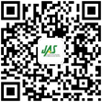2021, 8(1): 239-248.
doi: 10.1109/JAS.2020.1003393
Abstract:
The new coronavirus (COVID-19), declared by the World Health Organization as a pandemic, has infected more than 1 million people and killed more than 50 thousand. An infection caused by COVID-19 can develop into pneumonia, which can be detected by a chest X-ray exam and should be treated appropriately. In this work, we propose an automatic detection method for COVID-19 infection based on chest X-ray images. The datasets constructed for this study are composed of 194 X-ray images of patients diagnosed with coronavirus and 194 X-ray images of healthy patients. Since few images of patients with COVID-19 are publicly available, we apply the concept of transfer learning for this task. We use different architectures of convolutional neural networks (CNNs) trained on ImageNet, and adapt them to behave as feature extractors for the X-ray images. Then, the CNNs are combined with consolidated machine learning methods, such as k-Nearest Neighbor, Bayes, Random Forest, multilayer perceptron (MLP), and support vector machine (SVM). The results show that, for one of the datasets, the extractor-classifier pair with the best performance is the MobileNet architecture with the SVM classifier using a linear kernel, which achieves an accuracy and an F1-score of 98.5%. For the other dataset, the best pair is DenseNet201 with MLP, achieving an accuracy and an F1-score of 95.6%. Thus, the proposed approach demonstrates efficiency in detecting COVID-19 in X-ray images.
Elene Firmeza Ohata, Gabriel Maia Bezerra, João Victor Souza das Chagas, Aloísio Vieira Lira Neto, Adriano Bessa Albuquerque, Victor Hugo C. de Albuquerque and Pedro Pedrosa Rebouças Filho, "Automatic Detection of COVID-19 Infection Using Chest X-Ray Images Through Transfer Learning," IEEE/CAA J. Autom. Sinica, vol. 8, no. 1, pp. 239-248, Jan. 2021. doi: 10.1109/JAS.2020.1003393.






 E-mail Alert
E-mail Alert


